Category Archives: Machine Learning
Top US Universities for AI / ML Research

Artificial Intelligence (AI) has become an essential driver of innovation and economic growth in the 21st century. As a result, some of the best universities in the United States have been investing heavily in AI research to push the boundaries of this rapidly evolving field. In this blog post, we will explore the top 10 US universities for AI research, highlighting their achievements and providing links to their AI research homepages. Several leading / best universities in the United States have emerged as pioneers in AI research, recognizing its crucial role in driving innovation and economic growth. These institutions have made significant investments to establish themselves as top destinations for …
Hold-out Method for Training Machine Learning Models
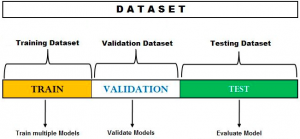
The hold-out method for training the machine learning models is a technique that involves splitting the data into different sets: one set for training, and other sets for validation and testing. The hold-out method is used to check how well a machine learning model will perform on the new data. In this post, you will learn about the hold-out method used during the process of training the machine learning model. Do check out my post on what is machine learning? concepts & examples for a detailed understanding of different aspects related to the basics of machine learning. Also, check out a related post on what is data science? When evaluating …
Google Unveils Next-Gen LLM, PaLM-2
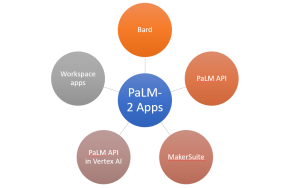
Google’s breakthrough research in machine learning and responsible AI has culminated in the development of their next-generation large language model (LLM), PaLM 2. This model represents a significant evolution in natural language processing (NLP) technology, with the capability to perform a broad array of advanced reasoning tasks, including code and math, text classification and question answering, language translation, and natural language generation. The unique combination of compute-optimal scaling, an improved dataset mixture, and model architecture enhancements is what powers PaLM 2’s exceptional capabilities. This combination allows the model to achieve superior performance than its predecessors, including the original PaLM, across all tasks. PaLM 2 was built with Google’s commitment to …
Occam’s Razor in Machine Learning: Examples
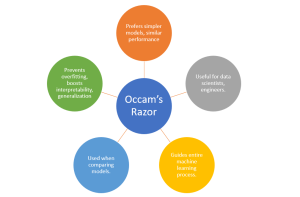
“Everything should be made as simple as possible, but not simpler.” – Albert Einstein Consider this: According to a recent study by IDC, data scientists spend approximately 80% of their time cleaning and preparing data for analysis, leaving only 20% of their time for the actual tasks of analysis, modeling, and interpretation. Does this sound familiar to you? Are you frustrated by the amount of time you spend on complex data wrangling and model tuning, only to find that your machine learning model doesn’t generalize well to new data? As data scientists, we often find ourselves in a predicament. We strive for the highest accuracy and predictive power in our …
Outlier Detection Techniques in Python: Examples
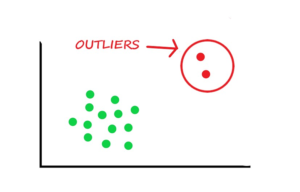
In the realm of data science, mastering outlier detection techniques is paramount for ensuring data integrity and robust machine learning model performance. Outliers are the data points which deviate significantly from the norm. The outliers data points can greatly impact the accuracy and reliability of statistical analyses and machine learning models. In this blog, we will explore a variety of outlier detection techniques using Python. The methods covered will include statistical approaches like the z-score method and the interquartile range (IQR) method, as well as visualization techniques like box plots and scatter plots. Whether you are a data science enthusiast or a seasoned professional, it is important to grasp these …
Lime Machine Learning Python Example

Today when core businesses have started relying on machine learning (ML) models predictions, interpreting complex models has become a necessary requirement of AI governance (responsible AI). Data scientists are often asked to explain the inner workings of a machine learning models for understanding how the decisions are made. The Problem? Many of these models stand out as “black boxes“, delivering predictions without any comprehensible reasoning. This lack of transparency (especially in healthcare & finance use cases) can lead to mistrust in model predictions and inhibit the practical application of machine learning in fields that require a high degree of interpretability. It could lead to erroneous decision-making, or worse, legal and …
Boston Housing Dataset Linear Regression: Predicting House Prices
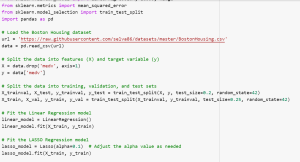
Predicting house prices accurately is crucial in the real estate industry. However, it can be challenging to determine the factors that significantly impact house prices. Without a clear understanding of these factors, accurate predictions are difficult to achieve. The Boston Housing Dataset addresses this problem by providing a comprehensive set of variables that influence house prices in the Boston area. However, effectively utilizing this dataset and building robust predictive models require appropriate techniques and evaluation methods. In this blog, we will provide an overview of the Boston Housing Dataset and explore linear regression, LASSO, and Ridge regression as potential models for predicting house prices. Each model has its unique properties …
ChatGPT Cheat Sheet for Data Scientists
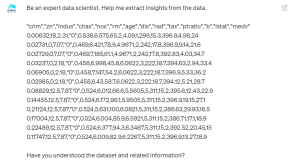
With the explosion of data being generated, data scientists are facing increased pressure to analyze and interpret large amounts of text data effectively. However, this can be a challenging task, especially when dealing with unstructured data. Additionally, data scientists often spend a significant amount of time manually generating text and answering complex questions, which can be a time-consuming process. Welcome ChatGPT! ChatGPT offer a powerful solution to these challenges. By learning different ChatGPT prompts, data scientists can significantly become super productive while generating relevant insights, answer complex questions, and perform machine learning tasks with ease such as data preprocessing, hypothesis testing, training models, etc. In this blog, I will provide …
How does Dall-E 2 Work? Concepts, Examples
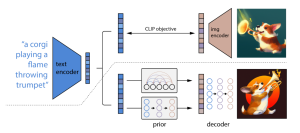
Have you ever wondered how generative AI is converting words into images? Or how generative AI models create a picture of something you’ve only described in words? Creating high-quality images from textual descriptions has long been a challenge for artificial intelligence (AI) researchers. That’s where DALL-E and DALL-E 2 comes in. In this blog, we will look into the details related to Dall-E 2. Developed by OpenAI, DALL-E 2 is a cutting-edge AI model that can generate highly realistic images from textual descriptions. So how does DALL-E 2 work, and what makes it so special? In this blog post, we’ll explore the key concepts and techniques behind DALL-E 2, including …
Gaussian Mixture Models: What are they & when to use?
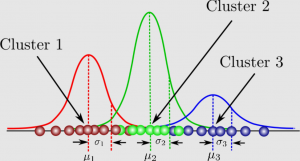
In machine learning and data analysis, it is often necessary to identify patterns and clusters within large sets of data. However, traditional clustering algorithms such as k-means clustering have limitations when it comes to identifying clusters with different shapes and sizes. This is where Gaussian mixture models (GMMs) come in. But what exactly are GMMs and when should you use them? Gaussian mixture models (GMMs) are a type of machine learning algorithm. They are used to classify data into different categories based on the probability distribution. Gaussian mixture models can be used in many different areas, including finance, marketing and so much more! In this blog, an introduction to gaussian …
NLP: Huggingface Transformers Code Examples

Do you want to build cutting-edge NLP models? Have you heard of Huggingface Transformers? Huggingface Transformers is a popular open-source library for NLP, which provides pre-trained machine learning models and tools to build custom NLP models. These models are based on Transformers architecture, which has revolutionized the field of NLP by enabling state-of-the-art performance on a range of NLP tasks. In this blog post, I will provide Python code examples for using Huggingface Transformers for various NLP tasks such as text classification (sentiment analysis), named entity recognition, question answering, text summarization, and text generation. I used Google Colab for testing my code. Before getting started, get set up with transformers …
Sklearn Algorithms Cheat Sheet with Examples

The Sklearn library, short for Scikit-learn, is one of the most popular and widely-used libraries for machine learning in Python. It offers a comprehensive set of tools for data analysis, preprocessing, model selection, and evaluation. As a beginner data scientist, it can be overwhelming to navigate the various algorithms and functions within Sklearn. This is where the Sklearn Algorithms Cheat Sheet comes in handy. This cheat sheet provides a quick reference guide for beginners to easily understand and select the appropriate algorithm for their specific task. In this cheat sheet, I have compiled a list of common supervised and unsupervised learning algorithms, along with their Sklearn classes and example use …
Supervised & Unsupervised Learning Difference
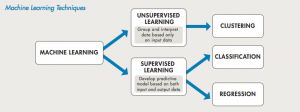
Supervised and unsupervised learning are two different common types of machine learning tasks that are used to solve many different types of business problems. Supervised learning uses training data with labels to create supervised models, which can be used to predict outcomes for future datasets. Unsupervised learning is a type of machine learning task where the training data is not labeled or categorized in any way. For beginner data scientists, it is very important to get a good understanding of the difference between supervised and unsupervised learning. In this post, we will discuss how supervised and unsupervised algorithms work and what is difference between them. You may want to check …
Machine Learning: Inference & Prediction Difference
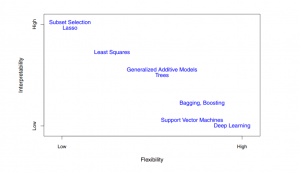
In machine learning, prediction and inference are two different concepts. Prediction is the process of using a model to make a prediction about something that is yet to happen. The inference is the process of evaluating the relationship between the predictor and response variables. In this blog post, you will learn about the differences between prediction and inference with the help of examples. Before getting into the details related to inference & prediction, let’s quickly recall the machine learning basic concepts. What is machine learning and how is it related with inference & prediction? Machine learning is about learning an approximate function that can be used to predict the value …
Sklearn Neural Network Example – MLPRegressor
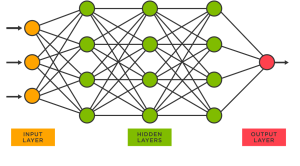
Are you interested in using neural networks to solve complex regression problems, but not sure where to start? Sklearn’s MLPRegressor can help you get started with building neural network models for regression tasks. While the packages from Keras, Tensorflow or PyTorch are powerful and widely used in deep learning, Sklearn’s MLPRegressor is still an excellent choice for building neural network models for regression tasks when you are starting on. Recall that Python Sklearn library is one of the most popular machine learning libraries, and it provides a wide range of algorithms for classification, regression, clustering, dimensionality reduction, and more. In this blog post, we will be focusing on training a …
Neural Networks Interview Questions – Quiz #45

Are you preparing for a job interview in the field of deep learning or neural networks? If so, you’re likely aware of how complex and technical these topics can be. In order to help you prepare, we’ve put together a list of common neural network interview questions and answers in form of multiple-choice quiz. The quiz in this blog post covers basic concepts related to neural network layers, perceptron, multilayer perceptron, activation functions, feedforward networks, backpropagation, and more. We’ve included 15 multiple-choice questions, as well as 5 additional questions specifically focused on the backpropagation algorithm. I will be posting many more quizzes on the neural networks in time to come, …
I found it very helpful. However the differences are not too understandable for me